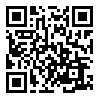year 4, Issue 15 (9-2005)
J. Med. Plants 2005, 4(15): 81-93 |
Back to browse issues page
Download citation:
BibTeX | RIS | EndNote | Medlars | ProCite | Reference Manager | RefWorks
Send citation to:



BibTeX | RIS | EndNote | Medlars | ProCite | Reference Manager | RefWorks
Send citation to:
Bagheri A, Naghdi Badi H, Movahedian F, Makkizadeh M, Hemati A. Evaluation of using herbal medicine in Isfahan women population. J. Med. Plants 2005; 4 (15) :81-93
URL: http://jmp.ir/article-1-702-en.html
URL: http://jmp.ir/article-1-702-en.html
1- Isfahan Agriculture and Natural resources Research Center, Isfahan, Iran
2- Department of Cultivation & Development, Institute of Medicinal Plants, ACECR and Tarbiat Modarres University, Tehran, Iran ,Naghdibadi@yahoo.com
3- Isfahan Agricultural Jahad Organization, Isfahan, Iran
4- Department of Cultivation & Development, Institute of Medicinal Plants, ACECR
5- Department of pharmacology, Institute of Medicinal Plants, ACECR
2- Department of Cultivation & Development, Institute of Medicinal Plants, ACECR and Tarbiat Modarres University, Tehran, Iran ,
3- Isfahan Agricultural Jahad Organization, Isfahan, Iran
4- Department of Cultivation & Development, Institute of Medicinal Plants, ACECR
5- Department of pharmacology, Institute of Medicinal Plants, ACECR
Abstract: (7069 Views)
Background: Iranian herbal medicine has high capacity for disease prevention and remedy and can help to resolve health and medical problems. Identifying consumers’ needs and paying attention to their recommendations is an important factor for the proper use and marketing of these products. Method: This Survey Research was performed on the use of herbal medicines women in Isfahan on the base of cluster sampling. The population was categorized to three groups, including poor, middle income and wealthy. The data was collected through interviewing and filling a questionnaire. The data was analyzed statistically by chi-square test and also evaluated on the base of descriptive statistics. Conclusion: Results indicated that high percentage of the three groups used medicinal plants. Only about 11% of population in these levels had no tendency to use these materials. Also, despite of expressing satisfaction with herbal medicine, some problems such as high cost and contaminations of these materials lead to restriction in their use. 45.4% of people questioned these products two or three time each year. Also, there were significant differences among the three groups of population with respect to using herbal medicine. In general, 65.8% of population used these products and the highest (44.9%) and the lowest (18.4%) amount were related to middle income and poor groups, respectively.
Type of Study: Research |
Subject:
Traditional Pharmacy & Traditional Medicine
Received: 2005/05/18 | Accepted: 2005/10/12 | Published: 2005/09/22
Received: 2005/05/18 | Accepted: 2005/10/12 | Published: 2005/09/22
Send email to the article author
| Rights and permissions | |
 |
This work is licensed under a Creative Commons Attribution-NonCommercial 4.0 International License. |








